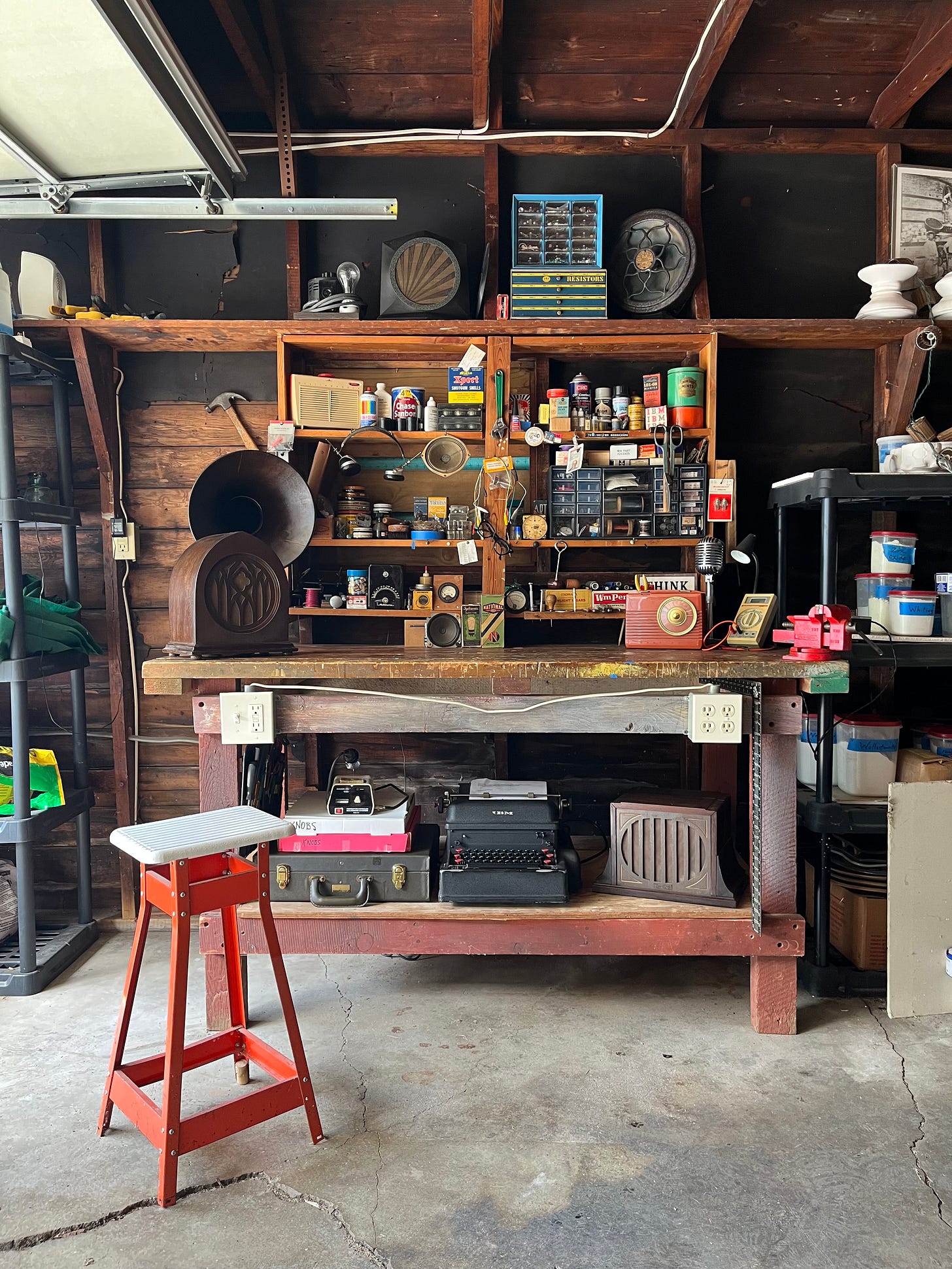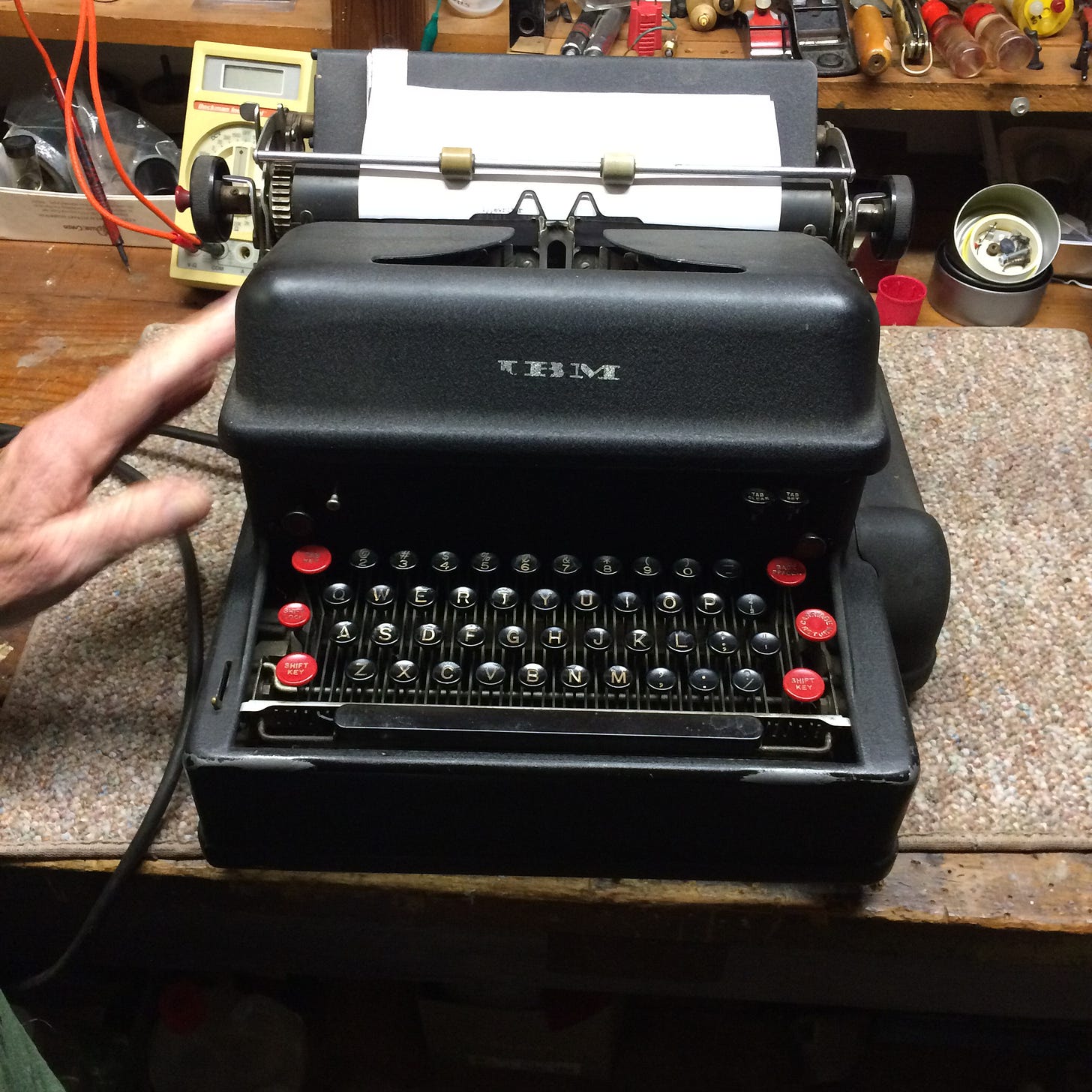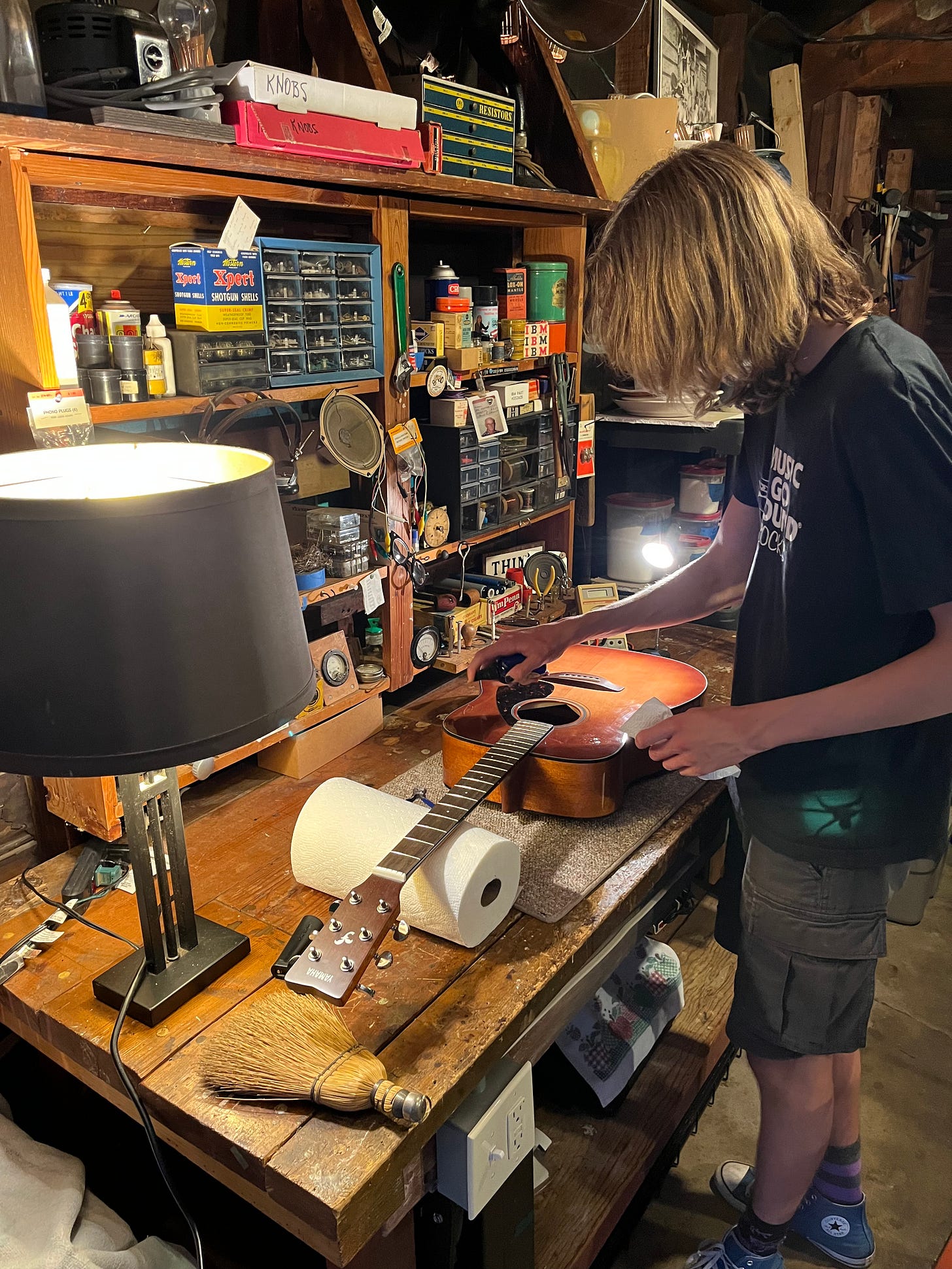First, a quick note to say that today is a Bandcamp Friday, where Bandcamp does not take their usual cut of the sales — it’s an excellent way to support your favorite artists.
Earlier this week, Foxy Digitalis Magazine generously provided the video premiere for The Workbench. Many thanks to Brad Rose there for sharing the video and for his kind review. He wrote, “I am so moved by this music and these visuals… A masterclass.” And, I have to again thank my friend Kevin Davison for his excellent (and very patient) videography and editing, as well as the visual artist (and my niece) Samantha Rehark, for a lovely line drawing that perfectly fits the sentiment of the project.
The early reviews of The Workbench have all been thoughtful and generous. I’m extra grateful that there are people out there who simply love to listen to music and then somehow they find ways to write about it. The landscape for music journalism has never looked so grim, and yet these writers, paying attention to a small, off the beaten path project like this one, are remarkable to me. I hope all of these publications can keep going strong. Here are a few quotes from their reviews:
Jason Woodbuy at Aquarium Drunkard states, "Harnetty creates space for a piece that is at once melancholy, uplifting, winsome, and profound... Carve out some time to let this one work its wonders on you and you may find it about you and yours as well—an ode to all we share and can, together, repair."
And Andy Downing at Matter News (an invaluable source of local, independent journalism here in Columbus) wrote, “It’s easily [Harnetty’s] most intimate composition, drawing back the veil in ways that can be gutting.”
Justin Cober-Lake at Dusted Magazine observed that The Workbench is “a single movement to honor a relationship while reflecting on the brevity of time and the artifacts that persist amid mortality… It’s a short statement from Harnetty but one that lasts.”
And Richard Allen at A Closer Listen states, "Paul spent his life fixing typewriters and extending the lives of other objects. In similar fashion, Brian now extends his father’s memory, enhancing it with a heartfelt tribute that will introduce him – via the objects he loved – to people who never had the chance to know him. The physical workbench has now become aural; we suspect his father would be proud.”
The reception from friends and strangers alike has also been heartfelt. Many people have told me how the piece has resonated with them, and touched them. In all honesty, I think it is less the piece, and more the realization that we are all human and fallible, and that a small, personal story can somehow be a reminder that we are all connected and must all come to terms with the fragility of our lives. The music, then, becomes a conduit to and a reminder of our humanness; a single link in a chain of gifts that feel like they have somehow landed in our laps.
After my father died, I spent a lot of time in my parents’ basement, sitting at the workbench. The house was so quiet, and I sat there straining to listen to these silent objects, trying to remember their sounds, tapping into them through memory. I couldn’t bear to move anything, not yet.
Months later, however, it came time to start cleaning out the basement, in anticipation of preparing the house to be sold. I decided that I would move the workbench and reassemble it at my home. When I finally got all of the pieces into my garage, I was struck at how the workbench had become a kind of shrine: an attempt to memorialize, but also an attempt to lock in the way that I had always seen and understood this assemblage of cans and tools and machinery.
One hot day in September, Kevin came over and we began to film the workbench. We were able to capture both individual objects and take everything in as a whole. I was worried that filming a big static object for such a long time would become boring! In fact, the opposite happened; the textures, colors, and variety of objects all seemed to encourage a slow, still contemplation. Each object — a green mint can, a cigar box, an ancient voltmeter, a tangled rainbow of speaker wire, a rescued bird’s nest sitting in a roll of blue painter’s tape — had a personal story for me, but was also just fascinating to look at and spend time with.
Now that the filming was completed, I wondered what might happen next — would the workbench become fixed and unchanging? As I came back every day, however, I saw that this would be impossible, and not even desirable. I kept using the things — a pocket knife to cut twine in the garden, a screwdriver to fix a door, a ruler to measure the length of a found feather — and I realized that I was continually altering the workbench. I was messing it up. And then my son soon felt comfortable using it to repair his guitars; it was the perfect height for his lanky frame. And my wife was there too, placing pots and cups and vases on its sturdy top as they were coming and going from the heat of the kiln.
So this is what I mean when I talk about the workbench as a ‘gift,’ and as a gift in motion. Without human interaction, the workbench remains static, inert. But as soon as we use it, we are activating it. We are adding dozens of our own tiny stories to it, and it silently reflects and records these stories — a drip of paint, a nail hole, a chip out of its side — if we are only patient enough to pay attention to them. I learned this lesson many years ago with archives, when I realized they could contain every kind of thing in the world, except for human interaction. They depended on us to discover and activate their layers of meaning and feeling.
The same is true here. And now, I am happy to just keep using this workbench as, well, a workbench.
Happy listening,
Brian








